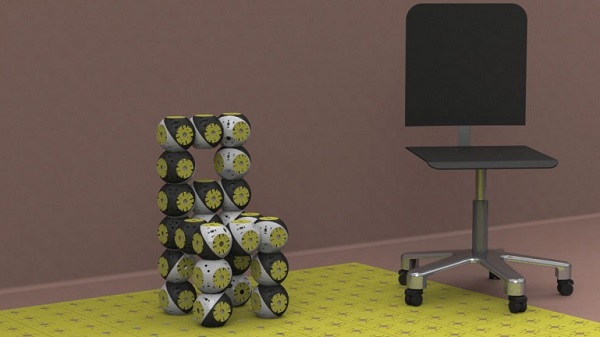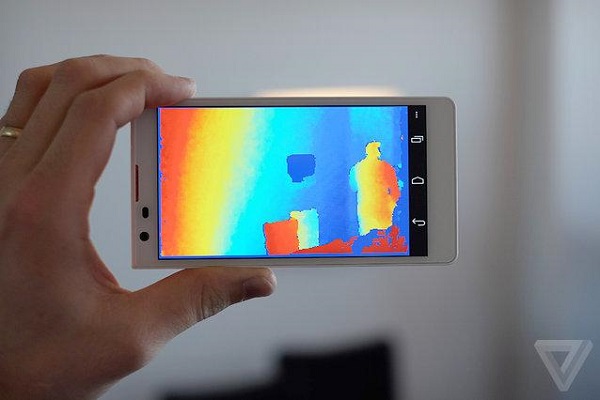Walyou |  |
| Roombots Are Reconfigurable Pieces of Furniture Posted: 23 May 2014 01:50 PM PDT  With the Roombots, the robotic modules that transform themselves into various pieces of furniture, you can no longer blame your better half or your mother-in-law for any changes in the interior design of your apartment. A product of the Swiss researchers from the Biorobotics Laboratory (BioRob) at École polytechnique fédérale de Lausanne (EPFL), Roombots connect to one another in order to form various types of furniture, and can easily change their shape to something else when required. Do you have too many tables and not enough chairs (or the other way around)? Roombots can help you with that, as flexibility is their middle name. Massimo Vespignani, a PhD student at BioRob, stated in an interview with GizMag that “We start from a group of Roombot modules that might be stacked together for storage. The modules detach from this pile to form structures of two or more modules. At this point they can start moving around the room in what we call off-grid locomotion. We are currently trying to control larger structures, while trying to reduce as much as possible the energy consumption and impacts with the ground.” Vespignani also explained how these robotic pieces of furniture are supposed to work: “A single module can autonomously reach any position on a plane (this being on the floor, walls, or ceiling), and overcome a concave edge. In order to go over convex edges two modules need to collaborate.” The shape of the modules enables people to transport them easily, as stacking them together is not difficult at all: “The advantage would be that the modules can be tightly packed together for transportation and then can reconfigure into any type of structure (for example a robotic manipulator).” Roombots can work on their own, or they can be used to enhance existing pieces of furniture, as Vespignani explained: “We can ‘augment’ existing furniture by placing compatible connectors on it and attaching Roombots modules to allow it to move around the house.” Are you already shouting virtually at the developers of these tiny robots to shut up and take your money? Well, don’t hold your breath, as Vespignani estimates that it will take a couple of decades until these hit the market: “Our ultimate goal is for sure to improve the quality of life. There are still a lot of research questions and technical challenges to solve. I would say they could be in the market in 20 years.”
Be social! Follow Walyou on Facebook and Twitter, and read more related stories about the telescopic contact lens that lets wearers zoom in/out at will and the Swiss robot cheetah cub. |
| Google Works on 4,000 Project Tango Tablets for Its I/O Conference Posted: 23 May 2014 12:30 PM PDT  The Project Tango smartphone already was something out of this world, but the Wall Street Journal claims that Google has more of the same in the store for us. According to the Wall Street Journal, the search giant is working on a cutting-edge tablet that is capable of seeing the world around it. At the moment, it is unknown whether Google intends to use Project Tango to replace the Nexus tablets that are manufactured by other companies, or if it will be sold as a totally different device. Still, the major selling point of the 7-inch Project Tango tablets will be the two back cameras, IR depth sensors and advanced software for 3D image capture. Google’s Advanced Technology and Projects group revealed a prototype smartphone in February that worked on the same principle of 3D mapping the surroundings of its user using a great number of sensors. One of the applications of this technology could be indoor navigation for the visually-impaired. On top of that, Google claimed that this could make video games more immersive. Not at last, 3D mapping could be used for guiding shoppers through a store by giving them step-by-step instructions. Bryan Ma, an analyst at research firm IDC, pointed out that Google needs to involve some developers in this project, if it means to take this further: “It is critical to open the new technology to developers first as the key is how you can translate the technology into practical applications.” The Wall Street Journal reports that these tablets will be launched before Google’s I/O developer conference, which will take place at the end of June. Some of the 4,000 tablets will be given to developers, so that apps are built for the devices ahead of the public release. Rajeev Chand, head of research at Rutberg & Co., an investment bank involved in the wireless and digital-media industries, added that “The technology is ahead of the applications.” Still, with such big names as Facebook and Google focusing on virtual reality and image processing, chances are that progress will be made quicker than usual. It remains to be seen how Google’s innovative technology will be put to use, but as with all of this company’s projects, I’d say that we’re in for a huge surprise. Be social! Follow Walyou on Facebook and Twitter, and read more related stories about the Google Project Tango 3D mapping smartphone and Google’s road crawlers that prepare the self-driving cars for the world. |
| You are subscribed to email updates from Walyou To stop receiving these emails, you may unsubscribe now. | Email delivery powered by Google |
| Google Inc., 20 West Kinzie, Chicago IL USA 60610 | |